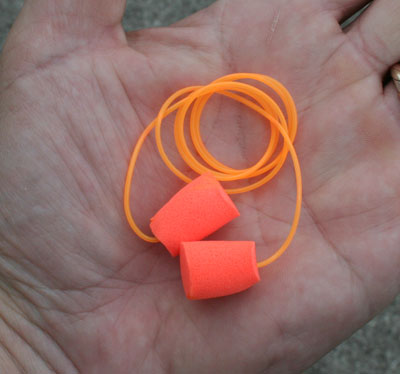 In the coming days, dozens of riders will set off on two grueling, competitive endurance rides on public roads, the Hoka Hey Challenge and the Iron Butt Rally. Just as importantly, many thousands of us will be take advantage of summer to ride our motorcycles across a few county lines or maybe across a continent. Some of us spend a lot of money modifying our bikes so we can ride longer and farther in comfort.
In the coming days, dozens of riders will set off on two grueling, competitive endurance rides on public roads, the Hoka Hey Challenge and the Iron Butt Rally. Just as importantly, many thousands of us will be take advantage of summer to ride our motorcycles across a few county lines or maybe across a continent. Some of us spend a lot of money modifying our bikes so we can ride longer and farther in comfort.
But what if I told you that you could make one change that would allow you to ride significantly longer with less fatigue, would only cost you pennies and requires no wrenching on your bike at all? And what if I added that it would even improve your quality of life in the future? You’d probably think I’m trying to sell snake oil, but I’m not.
I’m suggesting you wear ear plugs.
After I wrote my “what to wear” guide to motorcycle gear, I later realized I left out one piece of safety gear I almost always wear: a simple set of foam ear plugs. While you may not think of ear plugs as safety gear (I guess I didn’t at the time, either), I am thoroughly convinced that they do enhance your safety.
Anything that makes you less tired at the end of a long day on the road will increase your safety, because fatigue decreases concentration. Wearing ear plugs is one of the simplest and most effective ways to ride longer with less fatigue. The steady wind noise on a motorcycle not only tires you, it also eventually causes hearing loss that is most likely irreversible.
About 28 million people in the U.S. suffer from hearing loss, and about a third of those cases are due to exposure to noise, according to the National Institute on Deafness and Other Communication Disorders. The NIDCD says permanent hearing loss can result from exposure to 110 decibels for more than a minute, 100 decibels for more than 15 minutes, or prolonged exposure to 90 decibels.
Of course, the amount of noise a rider experiences on a motorcycle depends on a lot of factors, but at highway speeds you could easily experience 90 decibels just from wind noise alone. In other words, a day-long ride could do permanent damage to your hearing that you won’t notice for years, and the effect of all those rides over a lifetime is cumulative. That’s why many doctors who ride recommend wearing ear plugs on any ride longer than 15 or 20 minutes.
 Even basic foam ear plugs, properly used, can cut noise by eight to 12 decibels, which is enough to get you out of the danger zone. And they’re cheap insurance, too, especially if you buy in bulk. I bought a box of more than 200 sets of the ear plugs shown at right from an industrial supply store for about what a dozen or so would cost at pharmacy prices.
Even basic foam ear plugs, properly used, can cut noise by eight to 12 decibels, which is enough to get you out of the danger zone. And they’re cheap insurance, too, especially if you buy in bulk. I bought a box of more than 200 sets of the ear plugs shown at right from an industrial supply store for about what a dozen or so would cost at pharmacy prices.
Some riders worry that ear plugs will keep them from hearing sirens or other warning signals. But by reducing overall noise to tolerable levels, ear plugs can actually improve your ability to distinguish among various sounds.
Some say they’re uncomfortable. Like most things, comfort at least partially depends on what you’re used to. I used to forego ear plugs on a short ride around town. Now, the noise annoys me so much that I wear them virtually every ride. I don’t feel right without them. And if one type isn’t comfortable to you, there are various options: the disposable foam plugs, rubbery reusable plugs, often shaped like little Christmas trees, and you can even get custom-molded ear plugs made for you by a doctor.
It’s been many years since I began wearing ear plugs religiously, but I still remember what a revelation it was to me when I realized how much less tired I was after a long ride, thanks to the reduction in the noise level alone. Two little pieces of foam really can improve your odds of reaching old age. And when you do reach old age, you’ll be able to hear your grandkids when they ask you to tell them the story about the time you rode your motorcycle across the continent.
